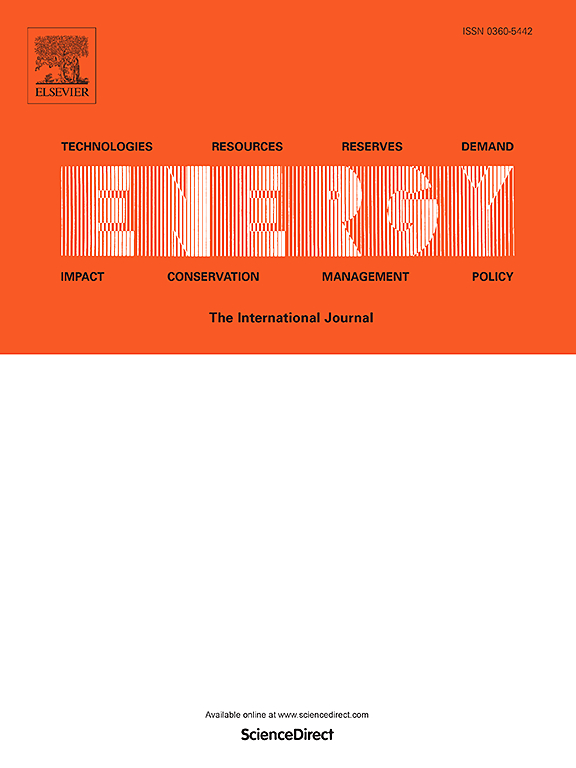Investigation of Savonius hydrokinetic turbine’s 3D structural characteristics affecting cluster performance
IF 9
1区 工程技术
Q1 ENERGY & FUELS
引用次数: 0
Abstract
S-VAHT clusters have become a promising approach for marine current energy utilization. However, most research has focused on cluster layout optimization, with limited attention to how 3D structural aspects like aspect ratio (AR) and twist angle (TA) affect the cluster's performance. This study fills that gap using 3-D simulations to explore the effects of AR and TA on both single turbines and clusters. Results show that the influence of AR on turbine performance is mainly related to the local flow near the end-plates, which affects the pressure distribution along the blade height. A larger AR reduces the impact of these local effects, leading to more consistent performance. In clusters, a larger AR enhances the blockage effect on the incoming flow, thereby improving overall array performance. TA has a substantial effect on the performance of both single turbines and clusters across all operating conditions, with increasing TA widening the performance gap between turbines. Furthermore, the interaction between TA and the relative azimuth angle is crucial for cluster coupling gains. Finally, the study demonstrates that TA improves the self-starting capability of turbines at specific azimuth angles. These findings provide a theoretical foundation for optimizing S-VAHT cluster design and offer innovative strategies to improve marine current energy efficiency.
萨沃纽斯水轮机三维结构特性对簇性能的影响研究
S-VAHT集群已成为一种很有前途的海流能源利用方法。然而,大多数研究都集中在集群布局优化上,很少关注像纵横比(AR)和扭转角(TA)这样的三维结构因素对集群性能的影响。这项研究利用三维模拟来探索AR和TA对单个涡轮机和集群的影响,填补了这一空白。结果表明:增压对涡轮性能的影响主要与端板附近的局部流动有关,影响了压力沿叶片高度的分布;较大的AR可减少这些局部影响的影响,从而获得更一致的性能。在集群中,较大的AR增强了对来流的阻塞作用,从而提高了阵列的整体性能。在所有运行条件下,TA对单个涡轮机和群集的性能都有实质性影响,随着TA的增加,涡轮机之间的性能差距会扩大。此外,TA和相对方位角之间的相互作用对簇耦合增益至关重要。最后,研究表明,TA提高了涡轮在特定方位角下的自启动能力。这些研究结果为优化S-VAHT集群设计提供了理论基础,并为提高海流能源效率提供了创新策略。
本文章由计算机程序翻译,如有差异,请以英文原文为准。
求助全文
约1分钟内获得全文
求助全文
来源期刊

Energy
工程技术-能源与燃料
CiteScore
15.30
自引率
14.40%
发文量
0
审稿时长
14.2 weeks
期刊介绍:
Energy is a multidisciplinary, international journal that publishes research and analysis in the field of energy engineering. Our aim is to become a leading peer-reviewed platform and a trusted source of information for energy-related topics.
The journal covers a range of areas including mechanical engineering, thermal sciences, and energy analysis. We are particularly interested in research on energy modelling, prediction, integrated energy systems, planning, and management.
Additionally, we welcome papers on energy conservation, efficiency, biomass and bioenergy, renewable energy, electricity supply and demand, energy storage, buildings, and economic and policy issues. These topics should align with our broader multidisciplinary focus.
 求助内容:
求助内容: 应助结果提醒方式:
应助结果提醒方式:


